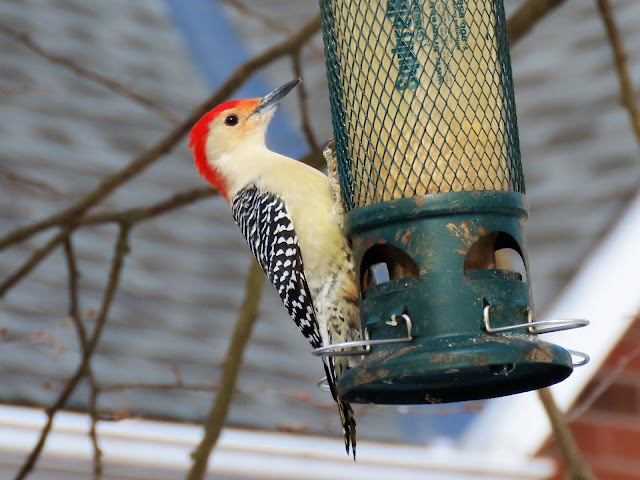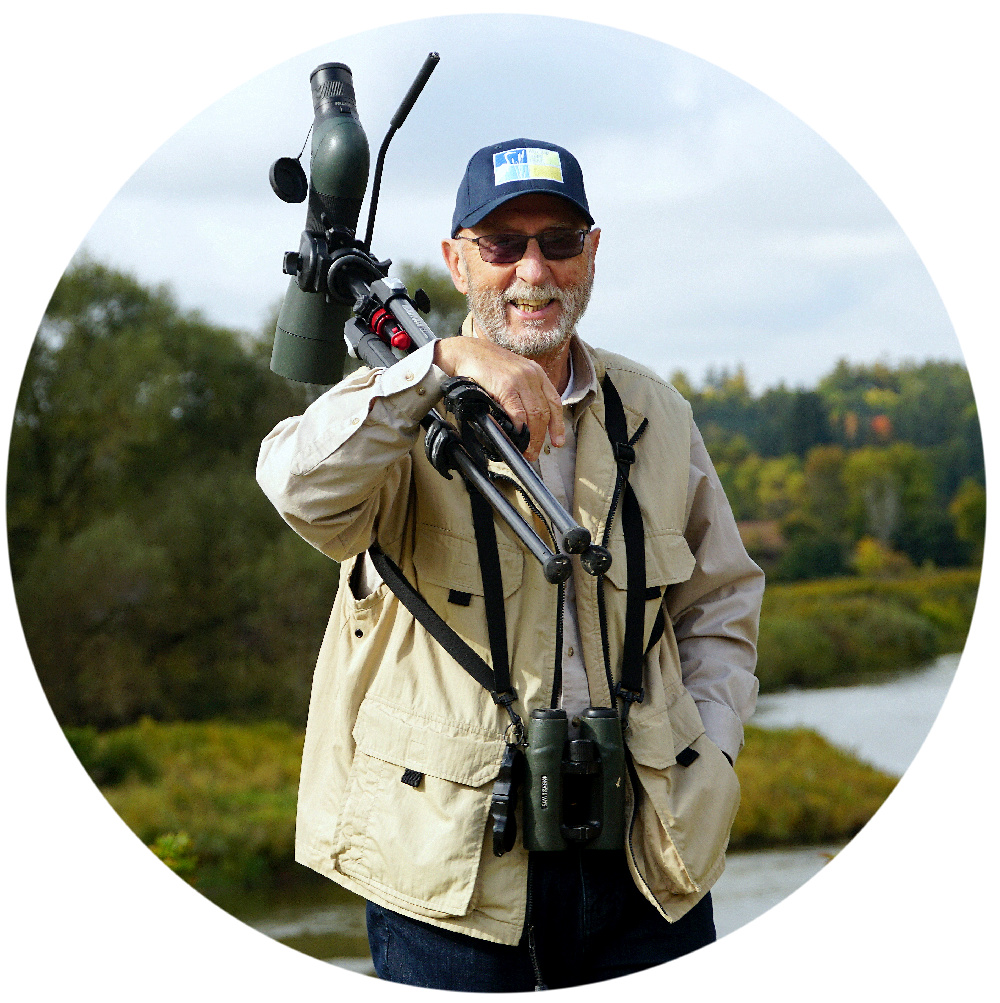Winter poses challenges for many birds, some of which deal with it by leaving, but we are extremely fond of those who stay behind to share its rigors with us.
Northern Cardinal (Cardinalis cardinalis) provides an incredible burst of colour, both as an accent on a dull day, and as vibrancy personified when the winter sun shines brightly.
American Crow (Corvus brachyrynchos) is bold and resolute, intelligent and always engaging. We share our world with them with immense pleasure.
Blue Jays (Cyanocitta cristata) are resourceful, with an outgoing personality, always making sure they receive at least their fair share of the food available.
A Cooper's Hawk (Accipiter cooperii) is an opportunistic visitor, drawn to backyard bird feeders by the abundance of prey. It is a simple fact that if you attract songbirds you will also attract those who prey on them. The hawks are quick to recognize injured birds - easy prey for a skilful raptor. Here is a Cooper's Hawk with a goldfinch plucked from our feeder.
Dark-eyed Junco (Junco hyemalis) is one of our most frequent visitors, often appearing in the yard just before first light. They patronize the feeders and also feed on the ground.
American Tree Sparrow (Spizelloides arborea) is a very attractive little bird that has become rare in our yard in recent years.
White-breasted Nuthatch (Sitta carolinensis) is very familiar and rarely a day goes by without a visit.
Red-breasted Nuthatch (Sitta canadensis) is not as reliable as its white-breasted counterpart, but in some winters it is common.
House Sparrow (Passer domesticus) is nowhere as common as in former times, and it is an infrequent visitor to our yard. Often overlooked, it is in fact a very striking bird. The first picture below is of a male, the second a female.
American Goldfinch (Spinus tristis) probably ranks as our most frequent visitor, in dull basic plumage, generally in quarrelsome, argumentative flocks.
Male and female House Finches (Haemorhous mexicanus) are often seen together in the winter; I assume this represents a pair, the bond being unusually strong in a songbird if that is indeed the case.
Generally seen in pairs or small flocks Mourning Doves (Zenaida macroura) always seem quite stoic, and often deal with the cold by fluffing up their feathers and trying to catch the warming rays of the sun.
With each passing year ever increasing numbers of American Robin (Turdus migratorius) spend the winter here, and sometimes they are present in our yard.
For sheer delight, a Black-capped Chickadee (Poecile atricapillus) is hard to beat, and if a day were to come and go without a visit we might think the world had ended!
Downy Woodpecker (Dryobates pubescens) is a delightful visitor - and very common. It is quite confiding and does not flee from humans in close proximity. The male is differentiated from the female by its red crown patch.
Hairy Woodpecker (Leuconotopicus villosus) is seen much less frequently. It is distinguishable from Downy Woodpecker by its larger size, longer heavier bill and a few other characteristics, but for those unfamiliar with the two species they can be easily confused. Once again the male has the red crown.
Red-bellied Woodpecker (Melanerpes carolinus) is a beautiful bird whose range has greatly expanded in recent years and it is now quite common in our area.
The male is distinguished by the continuous red from the nape to the top of the head, whereas the female has a grey crown (third picture).
I am glad to share my winters with them.















































